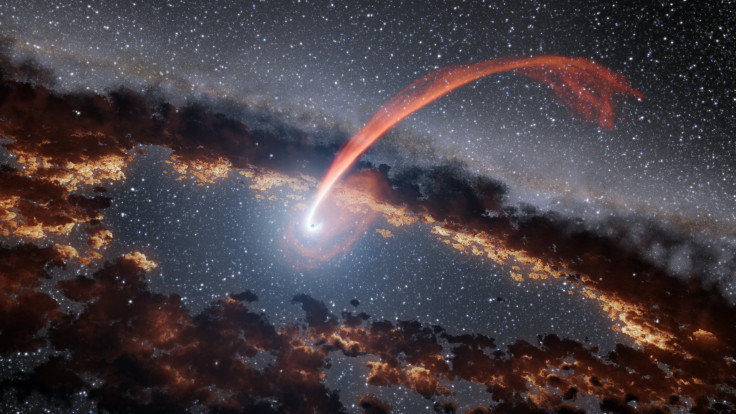Astronomers Observe Black Holes Devouring Stars, Belching Massive Flares

Black holes, as we all know, like eating stuff. When an object has the misfortune of getting trapped in a black hole’s gravitational well, massive tidal forces acting on it stretch it vertically through a process known as “spaghettification” — a process that culminates in an enormous burst of high-energy radiation as the object is swallowed by the black hole.
For the first time ever, scientists have been able to observe these “tidal disruption” flares in infrared wavelength by studying how dust particles surrounding black holes absorb and re-emit the light emitted during the death of stars.
“This is the first time we have clearly seen the infrared light echoes from multiple tidal disruption events,” Sjoert van Velzen, a postdoctoral fellow at Johns Hopkins University, Baltimore, and lead author of a study describing three such events, said in a statement. A fourth black hole was also caught in the act of swallowing a star by a team of researchers at the University of Science and Technology of China.
Flares from black holes devouring stars contain high-energy radiation, including ultraviolet and X-ray light. Such flares destroy any dust located close to the black hole. However, dust particles manage to survive beyond the reach of the most intense radiation, and unlike the high-energy flares from black holes, the radiation emitted by this surviving dust is at longer, infrared wavelengths.
Scientists using NASA’s Wide-field Infrared Survey Explorer telescope were able to detect four such events by measuring the infrared glow of dust heated by the flares. They believe their findings can shed light not only how black holes feed, but also on the location of dust that encircles supermassive black holes at the centers of most galaxies.
“Our study confirms that the dust is there, and that we can use it to determine how much energy was generated in the destruction of the star,” Varoujan Gorjian, an astronomer at NASA’s Jet Propulsion Laboratory, Pasadena, California, who was part of the study led by van Velzen, said in the statement.
© Copyright IBTimes 2024. All rights reserved.






















